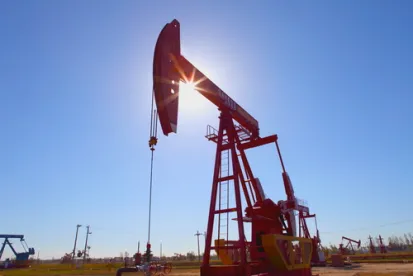Effective September 13, 2010, the Texas Railroad Commission ("Railroad Commission") adopted a new rule on the plugging of inactive oil and gas wells and the removal of associated surface equipment. The new rule, codified with existing Statewide Rule 15, applies to onshore wells and was instituted principally to address the risks presented by live electrical lines connected to inactive wells as well as to contain the increasing cost to the State of plugging inactive wells. In order to comply, operators are required to plug the well and remove equipment, return the well to active operation, or file for an extension.
Which Wells Are Affected?
The rule mandates a variety of actions depending on how long particular wells have been idle. More specifically, operators of wells that have been inactive:
- for more than 12 months must certify that the electric service has been physically terminated.
- for at least five years are additionally required to certify that they own the land that the well sits on or that they have emptied or purged of production fluids all piping, tanks, vessels and other equipment associated with the well.
- for more than ten years are further required to certify that they either own the land or that they have emptied and purged all production fluid and removed all of the surface equipment.
Additionally, operators with wells inactive prior to September 1, 2000 may consider the Phase-in program provided under the rule which still requires electric disconnection but does not impose a requirement to purge fluids and provides a five-year phase-in period for the removal of surface equipment. Notably, companies that acquire inactive wells are subject to all of the rule's plugging and removal requirements but they receive far less leeway on timing than do existing operators and, further, until those wells comply with Rule 15, they are prohibited from further transactions involving the inactive wells.
Compliance Options
One immediate liability for operators created by Rule 15 is the cost to plug many inactive wells, which is estimated by the Railroad Commission to cost anywhere from $4,500 to $15,000 per well. Over 87,000 wells currently are listed on the Railroad Commission's inactive well aging report ("IWAR"), with some individual companies having hundreds of such wells subject to the rule.
Other options for compliance under the rule include obtaining an extension or returning wells to active operation. Operators can choose to seek an extension either on a well-by-well basis or on a blanket basis across the company. The blanket extension requires that the operator either plug or restore to active 10 percent of the inactive wells listed on their most recent P-5, submit financial security to cover the cost of plugging all of the inactive wells or $2 million, whichever is less, or, for those operators that are publicly traded entities, file a financing statement naming the operator as a debtor and the Railroad Commission as a secured creditor. Additionally, an extension to plug wells that have been inactive for 36 months or longer requires the operator to establish a bond in the amount of the estimated cost of plugging the well and performing an H-15 test on the well.
Operators are required to address their complete inventory of inactive wells each year through one of the rule's compliance options. Failure to comply can bar an operator from renewing its Organization Report ("P-5") or obtaining any other permits from the Commission. A delinquent P-5 allows the Commission to sever and seal all of the operator's wells and, eventually, collect the operator's financial security.
Other Liabilities: Remediation and Landowners' Rights
Perhaps as important as the direct requirements of the rule, however, are other potential liabilities that may be revealed as operators attempt to comply with Rule 15 including the discovery of needed environmental remediation and/or issues involving the landowner's rights. Operators of wells that have been inactive and, thus, unsupervised may find existing contamination issues at well sites that will require remediation, in addition to the plugging and abandonment obligations. Indeed, the purging and removal of equipment would seem to make it more likely that contamination or other remediation issues will become apparent, or even occur in the first instance, as a result of the equipment removal process. Remediation can be costly and potentially exposes operators to additional Railroad Commission requirements.
In addition, such contamination issues can expose operators to liability from landowners where, for example, discoveries of contamination are required (by law or contract) to be reported or where a sudden increase in physical activity associated with plugging or equipment removal attracts the landowner's attention. In such circumstances, landowners may demand confirmation that their land and water are not impacted; they may seek to have the surface restored and have any contamination remediated; and they may demand damages for any claimed injuries to their property, persons, or resources.
Summary
Overall, Statewide Rule 15 has the potential to be costly for some operators, both in its own right and as a result of environmental conditions the required site work may uncover. Operators should be prepared with a thoughtful compliance strategy that will appropriately utilize Rule 15's authorized approaches to inactive wells (plugging and equipment removal, returning a well to active operation, and/or filing for extensions) and also ensure they are prepared to address the consequences of reasonably anticipated environmental conditions in a manner that is responsible, efficient, and contains their liability risks.



 />i
/>i
